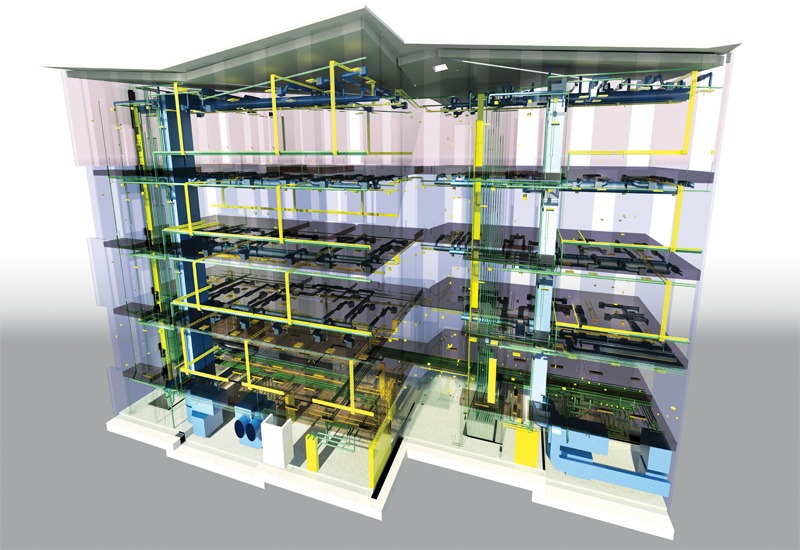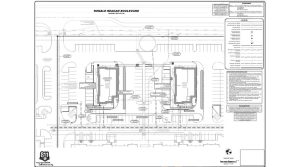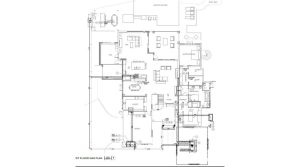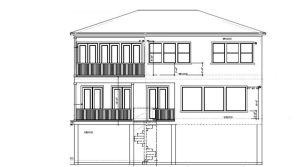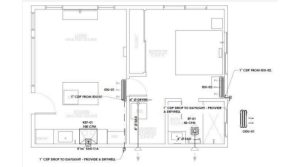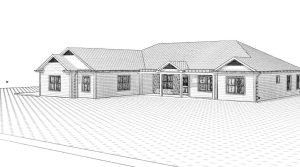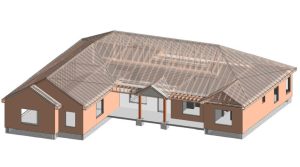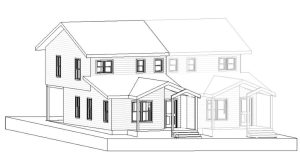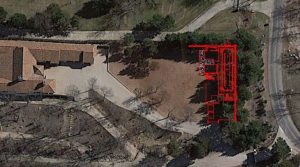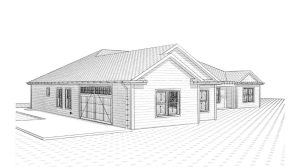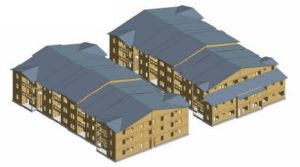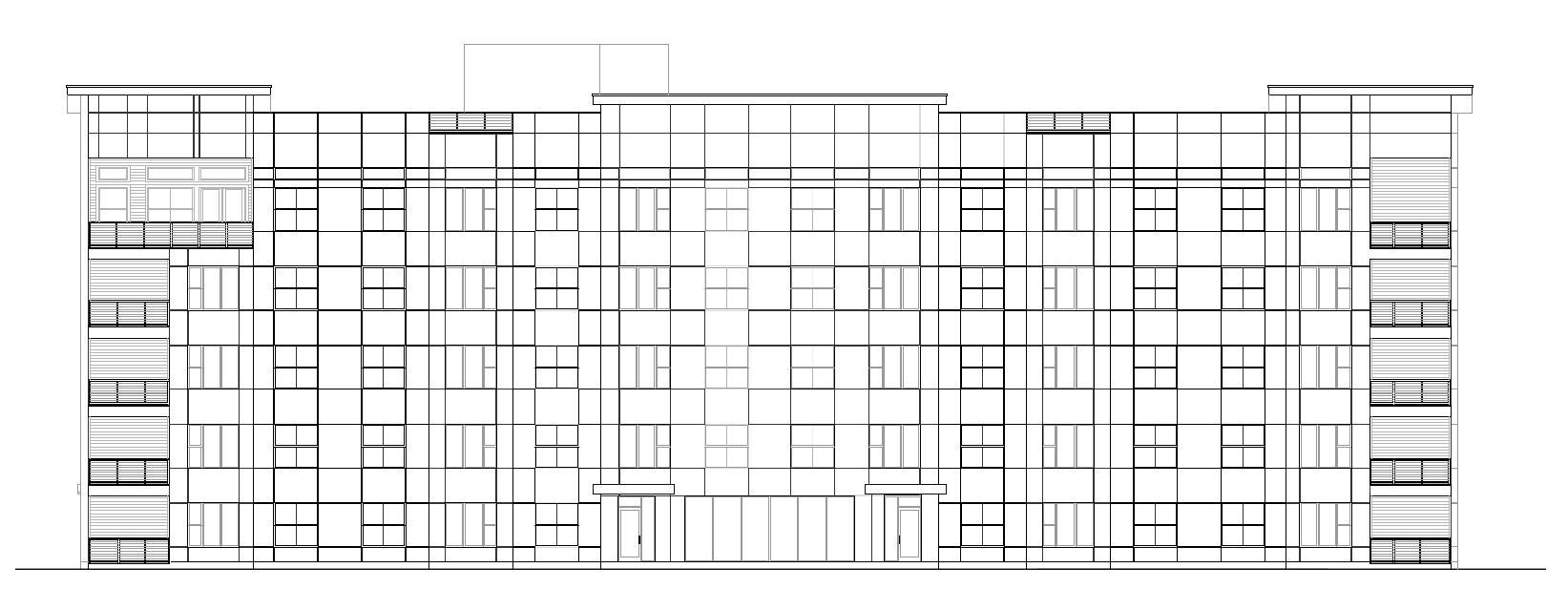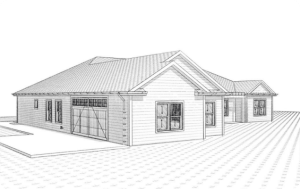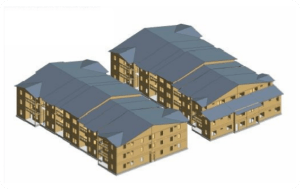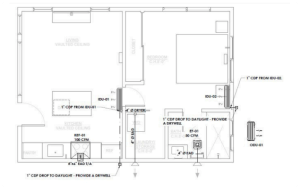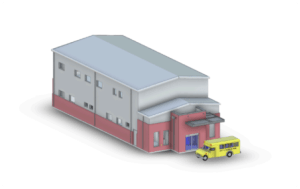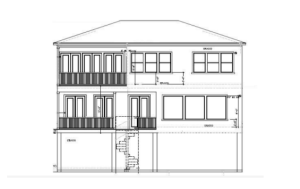The Power of Collaboration: Enhancing BIM Efficiency for Architects and MEP Engineers
Building Information Modeling (BIM) has revolutionized the architectural and engineering industries by allowing greater collaboration among project teams. By working together, architects and MEP engineers can create more efficient and cost-effective designs. Collaboration has become increasingly important as the construction industry has become more complex and challenging. With BIM, designers can visualize projects in 3D, which allows for more accurate and effective communication between team members. In this post, we will explore the power of collaboration and how it enhances BIM efficiency for architects and MEP engineers. We’ll take a closer look at what BIM is, how it works, and why it’s so beneficial for your next project. Whether you’re an architect or MEP engineer, this post will help you understand the importance of collaboration in BIM and how it can help you create better designs.Building Information Modeling (BIM) has revolutionized the architectural and engineering industries by allowing greater collaboration among project teams. By working together, architects and MEP engineers can create more efficient and cost-effective designs. Collaboration has become increasingly important as the construction industry has become more complex and challenging. With BIM, designers can visualize projects in 3D, which allows for more accurate and effective communication between team members. In this post, we will explore the power of collaboration and how it enhances BIM efficiency for architects and MEP engineers. We’ll take a closer look at what BIM is, how it works, and why it’s so beneficial for your next project. Whether you’re an architect or MEP engineer, this post will help you understand the importance of collaboration in BIM and how it can help you create better designs.
1. Introduction to BIM and its benefits
Building Information Modeling (BIM) has revolutionized the way architects and MEP (Mechanical, Electrical, and Plumbing) engineers collaborate and design construction projects. In this digital age, where efficiency and accuracy are paramount, BIM offers a comprehensive platform for seamless coordination, communication, and visualization throughout the entire project lifecycle.
At its core, BIM is a 3D modeling process that integrates various elements of a building project, including architectural, structural, and MEP systems, into a single, coherent model. Unlike traditional design methods that rely on 2D drawings, BIM provides a virtual representation of the building, enabling architects and MEP engineers to work collaboratively in a shared digital environment.
The benefits of BIM are abundant and far-reaching. Firstly, it eliminates the siloed approach to design and promotes interdisciplinary collaboration. Architects and MEP engineers can now work together from the initial stages of a project, ensuring that the design elements are harmonized and coordinated seamlessly. This collaborative approach leads to fewer clashes and conflicts during construction, thereby reducing costly reworks and delays.
Additionally, BIM enhances efficiency by streamlining the design and documentation processes. With the ability to view the entire building model in 3D, architects and MEP engineers can identify clashes between various systems and resolve them before construction begins. This proactive approach minimizes errors, reduces material wastage, and optimizes resource allocation, ultimately saving both time and money.
Furthermore, BIM enables better decision-making through improved visualization and analysis. Architects and MEP engineers can simulate and evaluate different design options, assess the performance of systems, and generate accurate quantity take-offs. This data-driven approach empowers stakeholders to make informed choices, optimize energy efficiency, and enhance the overall sustainability of the building.
In conclusion, BIM has revolutionized the construction industry by promoting collaboration, enhancing efficiency, and empowering informed decision-making. Architects and MEP engineers can leverage this powerful technology to overcome traditional design challenges and deliver high-quality, sustainable buildings. In the following sections, we will explore specific strategies and tools that can further enhance BIM efficiency for architects and MEP engineers.
2. The role of collaboration in BIM
The role of collaboration in Building Information Modeling (BIM) cannot be overstated. BIM is a powerful tool that enables architects and MEP (Mechanical, Electrical, and Plumbing) engineers to work together seamlessly, resulting in enhanced efficiency and improved project outcomes.
Traditionally, architects and MEP engineers worked separately, leading to communication gaps, errors, and delays in the construction process. However, with the advent of BIM, collaboration has become integral to the success of any project. BIM allows architects and MEP engineers to share a common digital platform, where they can collaborate in real-time, exchange information, and coordinate their efforts.
Collaboration in BIM involves multiple aspects, such as sharing design models, clash detection, and coordination meetings. By working collaboratively, architects and MEP engineers can identify and resolve potential clashes or conflicts between architectural and MEP systems at the early stages of the design process. This helps in minimizing rework, saving time, and reducing costs.
Furthermore, collaboration in BIM facilitates effective communication and information sharing among all stakeholders involved in the project, including contractors, suppliers, and clients. This collaborative environment promotes transparency, enables informed decision-making, and ensures that everyone is on the same page throughout the project lifecycle.
In addition to improved communication and coordination, collaboration in BIM also enhances overall project efficiency. It allows architects and MEP engineers to streamline their workflows, optimize resource utilization, and reduce wastage. By working together from the outset, they can identify opportunities for integration and optimization, resulting in more efficient designs and systems.
The power of collaboration in BIM extends beyond individual projects. It also contributes to the development of industry standards and best practices. Through collaborative efforts, architects and MEP engineers can share their knowledge, experiences, and lessons learned, driving innovation and continuous improvement in the field of building design and construction.
In conclusion, collaboration plays a pivotal role in enhancing BIM efficiency for architects and MEP engineers. By working together in a collaborative environment, they can overcome traditional barriers, improve communication, optimize designs, and ultimately deliver successful projects. Embracing collaboration in BIM is not just a trend but a necessity in today’s complex and demanding construction industry.
3. Challenges faced by architects and MEP engineers in BIM projects
BIM (Building Information Modeling) has revolutionized the architecture and MEP (Mechanical, Electrical, and Plumbing) engineering industries, allowing for more efficient and collaborative project workflows. However, like any innovative tool, it is not without its challenges.
Architects and MEP engineers face several common challenges when working on BIM projects. Firstly, there is often a lack of interoperability between different software platforms. Architects may use one software for designing the building, while MEP engineers use another for planning the electrical and plumbing systems. This disconnect can lead to data incompatibility and time-consuming manual adjustments.
Another challenge is the coordination of design changes. In a traditional design process, architects and engineers could easily communicate and make adjustments on the go. With BIM, changes made by one discipline can have a cascading effect on the entire project. Ensuring that all teams are aware of and can adapt to these changes requires effective communication and collaboration.
Additionally, the size and complexity of BIM models can pose challenges for architects and MEP engineers. Large-scale projects with intricate systems and components can slow down the software’s performance and make it difficult to navigate through the model. This can hinder the design process and impact productivity.
Lastly, there is the challenge of knowledge and skills. BIM requires a certain level of proficiency in using the software and understanding its capabilities. Architects and MEP engineers need to continually update their skills and stay abreast of advancements in BIM technology to fully leverage its potential.
Despite these challenges, architects and MEP engineers can overcome them by embracing collaboration and adopting strategies that enhance BIM efficiency. By establishing clear communication channels, utilizing interoperable software, and investing in training and development, professionals in these fields can harness the power of collaboration and unlock the full potential of BIM in their projects.
4. The importance of collaboration between architects and MEP engineers
Collaboration between architects and MEP (Mechanical, Electrical, and Plumbing) engineers is vital for enhancing BIM (Building Information Modeling) efficiency. BIM is a powerful tool that allows professionals in the architecture and engineering fields to create digital representations of buildings, incorporating detailed information about various systems and components.
Architects and MEP engineers play crucial roles in the design and construction process. Architects focus on the aesthetics and functionality of the building, while MEP engineers handle the complex systems that ensure the building operates efficiently and safely. By working together and collaborating effectively, these professionals can create integrated and optimized designs.
One of the key benefits of collaboration between architects and MEP engineers is the ability to identify and resolve potential conflicts or design clashes early in the process. For example, the placement of ductwork or electrical conduits may interfere with the architectural design or compromise the overall functionality of the building. By collaborating and coordinating their efforts, architects and MEP engineers can identify these conflicts and find solutions before construction begins, reducing costly changes and delays later on.
Moreover, collaboration promotes efficient communication and information sharing. By working closely together, architects and MEP engineers can exchange valuable insights and expertise, ensuring that the design incorporates the most effective and sustainable solutions. This collaborative approach also enables architects and MEP engineers to optimize the building’s performance, such as energy efficiency, indoor air quality, and occupant comfort.
Additionally, collaboration enhances project coordination and streamlines the overall construction process. When architects and MEP engineers work together from the initial stages of design, they can align their plans and specifications, facilitating smoother interactions with other stakeholders, such as contractors and subcontractors. This cohesion minimizes conflicts, avoids costly rework, and ultimately saves time and resources.
In conclusion, the importance of collaboration between architects and MEP engineers cannot be overstated. By leveraging their respective expertise and working together, they can enhance BIM efficiency, identify and resolve conflicts early, optimize designs, improve project coordination, and ultimately deliver high-quality buildings that meet the needs of clients and occupants. Embracing collaboration is essential for the success of architectural and engineering projects in today’s dynamic construction industry.
5. Benefits of enhanced collaboration in BIM projects
Enhanced collaboration in Building Information Modeling (BIM) projects offers numerous benefits for both architects and MEP (Mechanical, Electrical, and Plumbing) engineers. By working together seamlessly, these professionals can unlock the true potential of BIM and significantly improve project efficiency.
One of the key benefits of enhanced collaboration in BIM projects is improved communication. Architects and MEP engineers can share their designs, models, and data in real-time, ensuring everyone is on the same page. This eliminates potential miscommunications, reduces errors, and minimizes rework. Through effective collaboration, architects and MEP engineers can identify clashes or conflicts in their respective designs early on, enabling them to make necessary adjustments and prevent costly issues during construction.
Another advantage of enhanced collaboration is enhanced coordination. By collaborating closely, architects and MEP engineers can align their designs more effectively, ensuring proper spatial allocation for MEP systems. This coordination helps optimize the placement of electrical, plumbing, and HVAC systems, avoiding clashes and ensuring efficient use of space. As a result, the overall design becomes more integrated, functional, and aesthetically pleasing.
Collaboration in BIM projects also facilitates interdisciplinary decision-making. Architects and MEP engineers can collectively evaluate design alternatives, analyze performance, and determine the best solutions for the project. This collaborative decision-making process leverages the expertise of both disciplines, leading to more informed and comprehensive decisions. Additionally, early involvement of MEP engineers in the design phase allows them to provide valuable input, ensuring that the final design meets both architectural and engineering requirements.
Furthermore, enhanced collaboration enables improved project visualization. With BIM tools and technologies, architects and MEP engineers can create realistic 3D models that provide a holistic view of the project. By collaborating on these models, they can visualize and analyze the impact of various design decisions, such as lighting, equipment placement, and system integration. This visualization aids in identifying potential issues and optimizing designs for better performance, energy efficiency, and sustainability.
In conclusion, the benefits of enhanced collaboration in BIM projects for architects and MEP engineers are undeniable. Improved communication, enhanced coordination, interdisciplinary decision-making, and better project visualization all contribute to increased efficiency, reduced errors, and improved project outcomes. By embracing collaboration, professionals can harness the power of BIM and create more successful and harmonious building projects.
6. Strategies for effective collaboration between architects and MEP engineers
Collaboration between architects and MEP (Mechanical, Electrical, and Plumbing) engineers is crucial for maximizing the efficiency and success of a building project. By working together seamlessly, these two disciplines can overcome challenges, reduce errors, and create innovative designs that meet both aesthetic and functional requirements.
One strategy for effective collaboration is to establish clear lines of communication from the early stages of a project. Regular meetings and discussions should be held to ensure that all parties are aligned on project goals, design intent, and technical requirements. This open dialogue encourages the sharing of ideas, allows for feedback and input from all stakeholders, and promotes a collaborative mindset.
Another important aspect of collaboration is the use of technology, specifically Building Information Modeling (BIM). BIM software enables architects and MEP engineers to work on a shared platform, creating a virtual 3D model of the building. This model serves as a central repository of information, allowing for real-time collaboration, coordination, and clash detection. By utilizing BIM, architects and MEP engineers can identify and resolve conflicts early on, reducing the need for costly and time-consuming revisions during construction.
Regular coordination meetings and interdisciplinary design reviews are also essential for effective collaboration. These meetings provide an opportunity for architects and MEP engineers to discuss design changes, resolve conflicts, and ensure that all systems are integrated seamlessly. By working together closely at these meetings, potential issues can be identified and addressed before they become major problems on-site.
In addition to these strategies, it is important for architects and MEP engineers to foster a culture of mutual respect and trust. Each discipline brings unique expertise and perspectives to the table, and by valuing and appreciating each other’s contributions, they can create a harmonious working environment that promotes effective collaboration.
In conclusion, effective collaboration between architects and MEP engineers is vital for enhancing BIM efficiency and achieving successful building projects. By implementing strategies such as clear communication, the use of BIM technology, coordination meetings, and fostering a collaborative culture, architects and MEP engineers can work together seamlessly, resulting in optimized designs, reduced errors, and improved project outcomes.
7. Tools and technologies for improving collaboration in BIM projects
In the world of architecture and MEP (Mechanical, Electrical, and Plumbing) engineering, collaboration is key for successful Building Information Modeling (BIM) projects. The seamless integration and synchronization of design, construction, and operation processes rely heavily on effective collaboration among all stakeholders involved.
To enhance collaboration in BIM projects, architects and MEP engineers can leverage various tools and technologies designed specifically for this purpose. These tools not only streamline communication and coordination but also improve efficiency and productivity. Here are a few notable ones:
1. BIM Collaboration Platforms: Dedicated BIM collaboration platforms, such as Autodesk BIM 360 and Trimble Connect, provide a centralized space for all project stakeholders to access and share project information, models, and documentation in real-time. These platforms enable seamless collaboration, version control, clash detection, and issue tracking, ensuring that everyone is on the same page throughout the project lifecycle.
2. Cloud-based Project Management Tools: Cloud-based project management tools like Asana, Trello, and Monday.com offer robust features for task management, file sharing, and team collaboration. These tools allow architects and MEP engineers to create and assign tasks, track progress, and communicate effectively, regardless of location or time zone.
3. Virtual Design and Construction (VDC) Tools: VDC tools, such as Navisworks and Solibri, enable architects and MEP engineers to visualize and analyze complex BIM models in a 3D environment. These tools facilitate clash detection, coordination, and simulation, helping to identify and resolve design conflicts before construction begins. By collaborating virtually, teams can save time and reduce costly rework on-site.
4. Communication and Video Conferencing Tools: Effective communication is crucial for successful collaboration in any project. Tools like Microsoft Teams, Slack, and Zoom provide instant messaging, video conferencing, and screen sharing capabilities, allowing architects and MEP engineers to communicate effectively, hold virtual meetings, and provide real-time feedback, regardless of their physical location.
By embracing these tools and technologies, architects and MEP engineers can unlock the true power of collaboration in BIM projects. Improved communication, streamlined workflows, and enhanced coordination not only increase efficiency but also result in higher-quality designs, reduced errors, and ultimately, successful project deliveries.
8. Case studies showcasing successful collaboration between architects and MEP engineers Case studies showcasing successful collaboration between architects and MEP engineers serve as powerful examples of how teamwork and communication can greatly enhance BIM efficiency. These real-life examples provide invaluable insights into the benefits that can be achieved when professionals from different disciplines come together to work towards a common goal.
One such case study involves the design and construction of a large-scale commercial building. The architectural team and the MEP engineering team collaborated closely right from the initial stages of the project. Through regular meetings and open lines of communication, they were able to seamlessly integrate their respective designs into a cohesive and efficient BIM model.
By working collaboratively, the architects and MEP engineers were able to identify and resolve potential clashes and conflicts early on in the design process. This not only saved valuable time and resources but also prevented costly rework during the construction phase. The BIM model served as a central repository of information, allowing both teams to make informed decisions and coordinate their efforts effectively.
Another case study highlights the successful collaboration between architects and MEP engineers in the design of a sustainable residential complex. By leveraging BIM technology, the teams were able to optimize energy efficiency, reduce wastage, and enhance the overall performance of the building. The architects and MEP engineers worked hand in hand, considering factors such as natural lighting, ventilation systems, and energy-efficient equipment to create a sustainable living environment.
These case studies demonstrate the immense value of collaboration between architects and MEP engineers in the realm of BIM. By sharing their expertise and leveraging the power of technology, these professionals can overcome challenges, streamline workflows, and deliver projects that are highly efficient and sustainable.
In conclusion, the power of collaboration between architects and MEP engineers cannot be overstated. Through effective communication, a shared understanding of project goals, and the utilization of BIM technology, these professionals can achieve enhanced efficiency and deliver outstanding results. The successful case studies serve as a testament to the transformative impact that collaboration can have on the design and construction industry.
9. Overcoming barriers to collaboration in BIM projects
Collaboration is key when it comes to successful BIM projects, especially between architects and MEP (Mechanical, Electrical, and Plumbing) engineers. However, there can be various barriers that hinder effective collaboration in these projects.
One common barrier is the lack of communication and understanding between the two disciplines. Architects and MEP engineers often have different perspectives, priorities, and technical knowledge. This can lead to misunderstandings and conflicts when trying to integrate their designs in a BIM environment.
To overcome this barrier, it is essential to establish open lines of communication and promote a culture of collaboration from the outset. Regular meetings and workshops involving both architects and MEP engineers can foster a better understanding of each discipline’s requirements and constraints. This will enable them to work together more seamlessly and avoid clashes in the design phase.
Another barrier to collaboration can be the use of incompatible software or data formats. Architects and MEP engineers often work with different software tools and file formats, making it difficult to share and integrate their models effectively. This can result in data loss, translation errors, and delays in the project timeline.
To address this challenge, it is crucial to implement interoperable BIM software and standardized data formats. This allows architects and MEP engineers to exchange models and data seamlessly, ensuring accuracy and consistency throughout the project. Investing in software that supports open standards and collaborative workflows can significantly enhance the efficiency of collaboration in BIM projects.
Moreover, a lack of trust and a siloed mentality can also hinder collaboration between architects and MEP engineers. Each discipline may be protective of their own work and hesitant to share information or make compromises. This can lead to missed opportunities for optimization and coordination, ultimately impacting the project’s overall efficiency.
To overcome this barrier, it is important to foster a collaborative and inclusive environment. Encouraging open dialogue, mutual respect, and a shared sense of purpose can break down silos and build trust between architects and MEP engineers. This will create a foundation of teamwork and cooperation, enabling them to work together towards common project goals.
In conclusion, overcoming barriers to collaboration is crucial for enhancing BIM efficiency in projects involving architects and MEP engineers. By promoting effective communication, implementing interoperable software, and fostering a collaborative environment, the power of collaboration can be harnessed to drive successful BIM projects and deliver optimal outcomes for all stakeholders involved.
10. Conclusion: Harnessing the power of collaboration in BIM for better project outcomes
In conclusion, harnessing the power of collaboration in Building Information Modeling (BIM) is essential for achieving better project outcomes. Architects and MEP (Mechanical, Electrical, and Plumbing) engineers play crucial roles in the construction industry, and by working together seamlessly, they can enhance BIM efficiency and deliver projects with higher quality and greater success.
Through collaboration, architects and MEP engineers can leverage their unique expertise and perspectives to identify potential clashes or conflicts early on in the design phase. By addressing these issues proactively, they can save time, reduce costs, and avoid costly rework during the construction phase. This collaborative approach ensures that all aspects of the building design, including architectural and MEP systems, are well-integrated and optimized for efficiency.
Additionally, collaboration in BIM allows for better coordination and communication among project stakeholders. Architects and MEP engineers can share real-time data, design modifications, and project updates, fostering a more streamlined workflow. This collaborative environment promotes transparency, reduces misunderstandings, and facilitates informed decision-making, ultimately leading to improved project coordination and delivery.
Moreover, the power of collaboration extends beyond the design and construction phases. By involving all stakeholders, including architects, MEP engineers, contractors, and owners, throughout the entire project lifecycle, BIM can be leveraged for ongoing maintenance and facility management. This collaborative approach ensures accurate and up-to-date information about the building’s systems, enabling efficient maintenance, troubleshooting, and future expansions.
In conclusion, embracing collaboration in BIM is not just a trend but a powerful strategy for architects and MEP engineers to enhance efficiency, improve project outcomes, and drive innovation in the construction industry. By working together, leveraging technology, and fostering open communication, they can unlock the full potential of BIM and deliver buildings that are not only visually stunning but also functional, sustainable, and cost-effective. The power of collaboration in BIM is the key to shaping the future of architecture and engineering, transforming the way we design and construct buildings for generations to come.
In conclusion, we have explored the power of collaboration in enhancing BIM efficiency for architects and MEP engineers. By working together, these two crucial stakeholders can bring their unique expertise and perspectives to the table, resulting in more streamlined processes, improved communication, and ultimately, better project outcomes. The benefits of collaboration in BIM cannot be overstated, from reducing errors and conflicts to saving time and money. As technology continues to advance, it is essential for professionals in the architecture and engineering fields to embrace collaboration as a key driver of success. So let’s harness the power of collaboration and unlock the full potential of BIM for a brighter future in the world of construction and design
